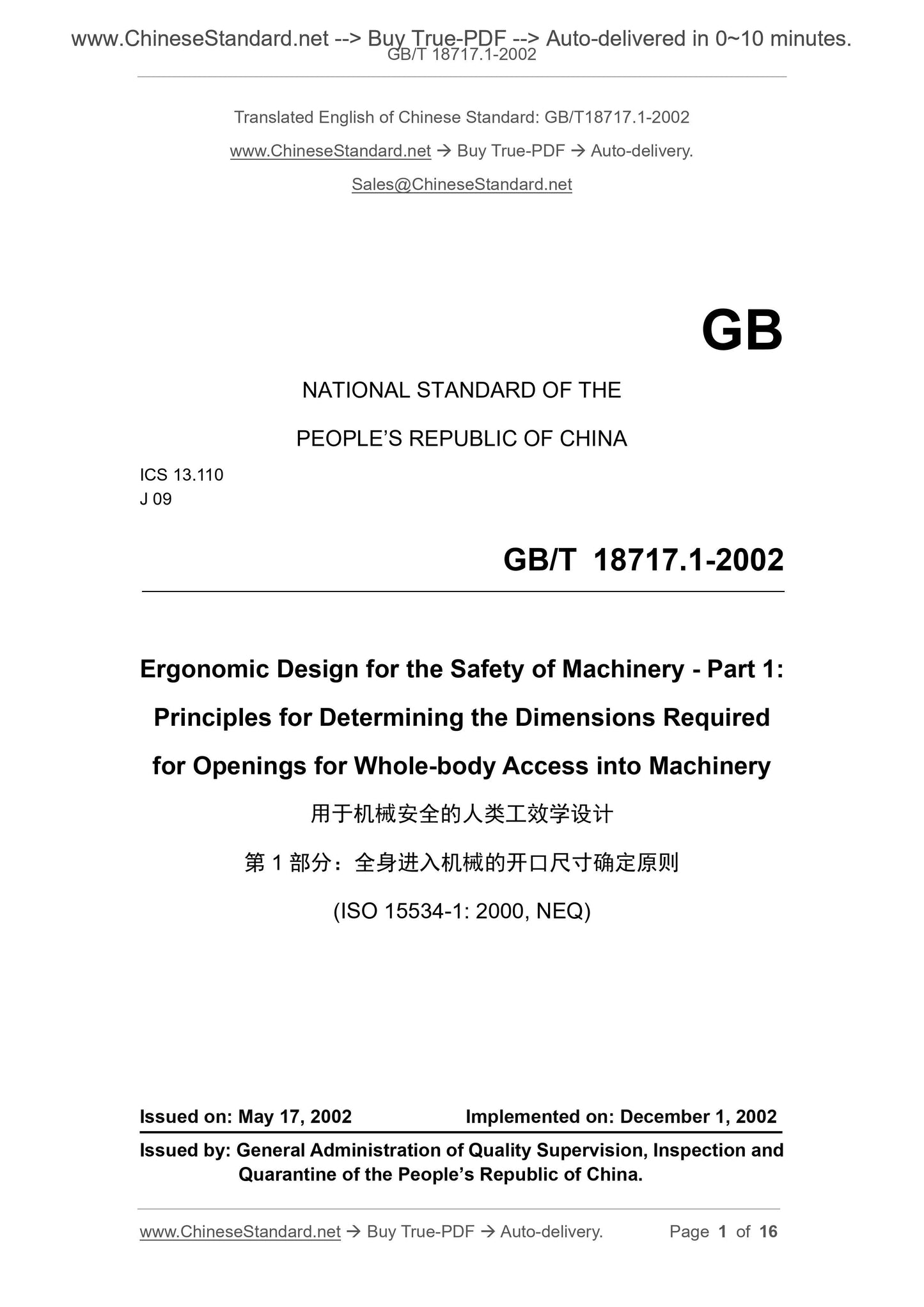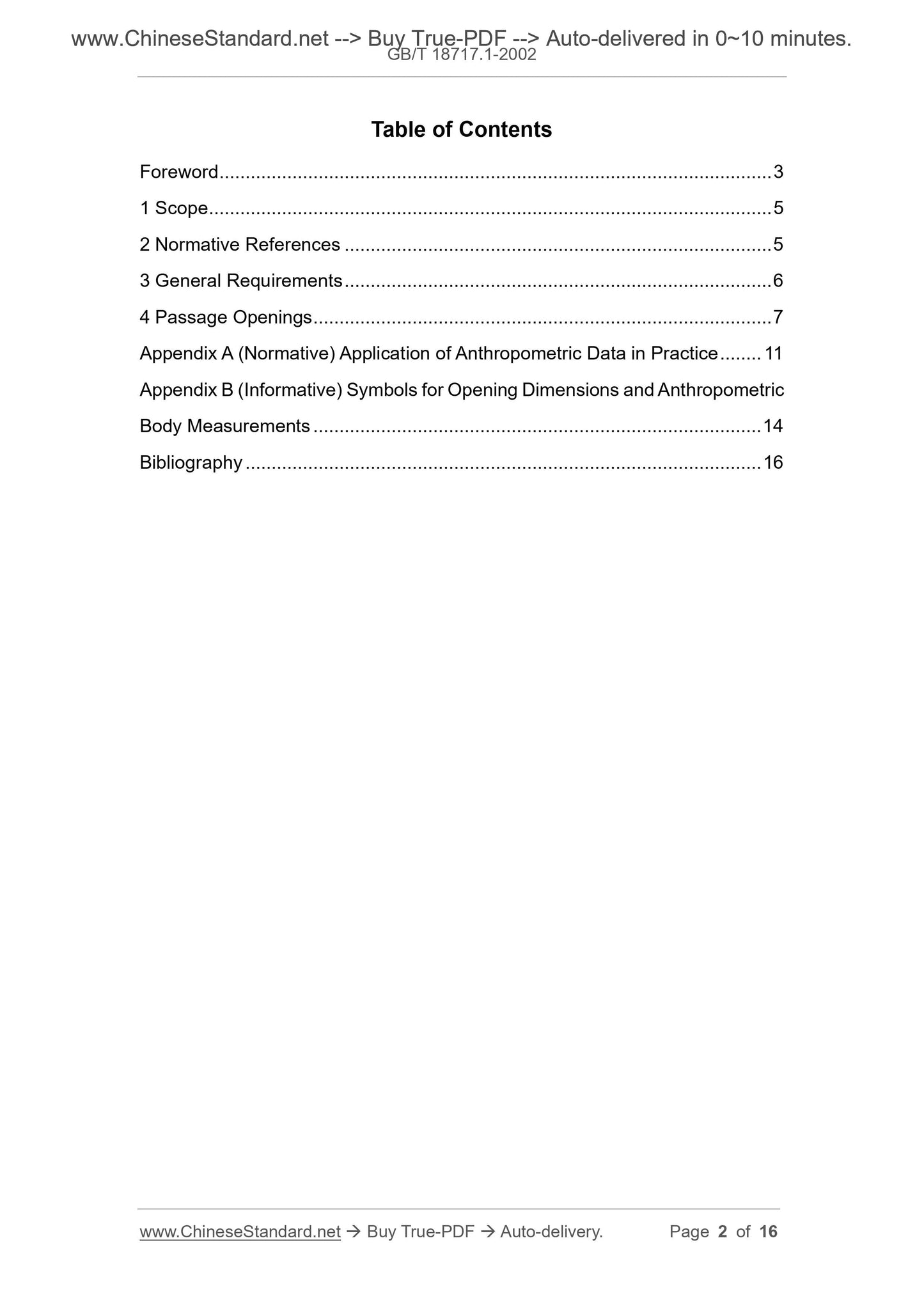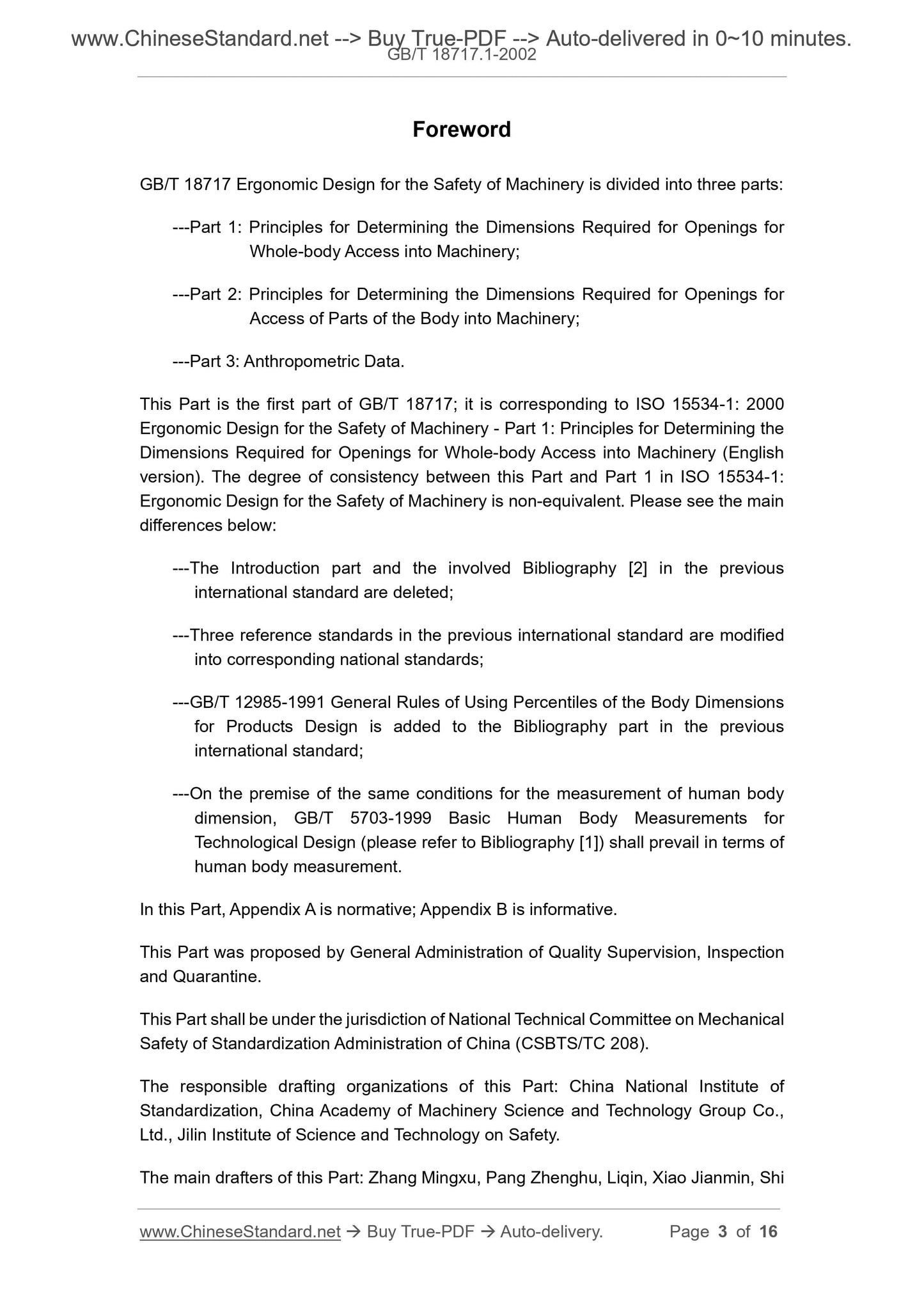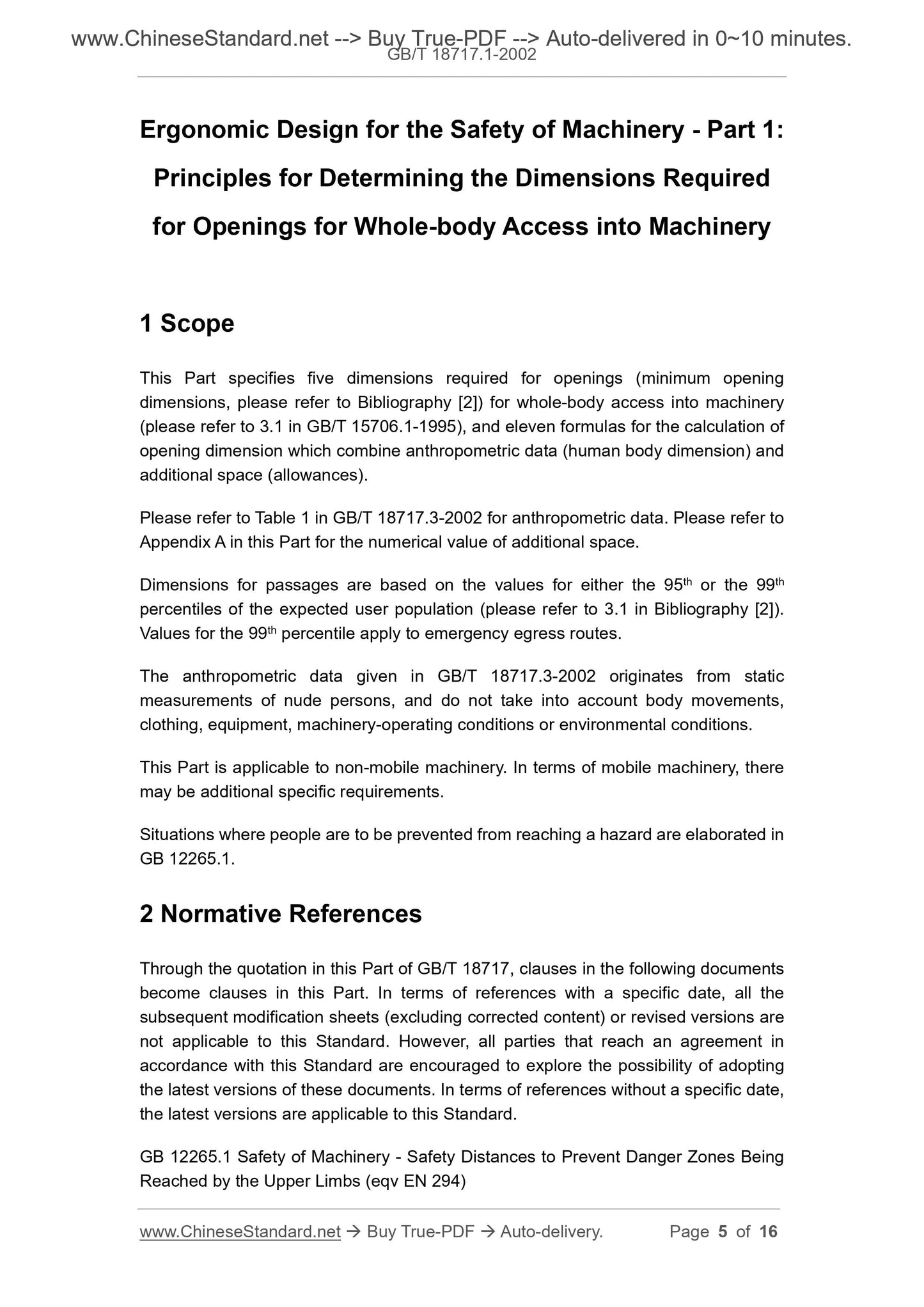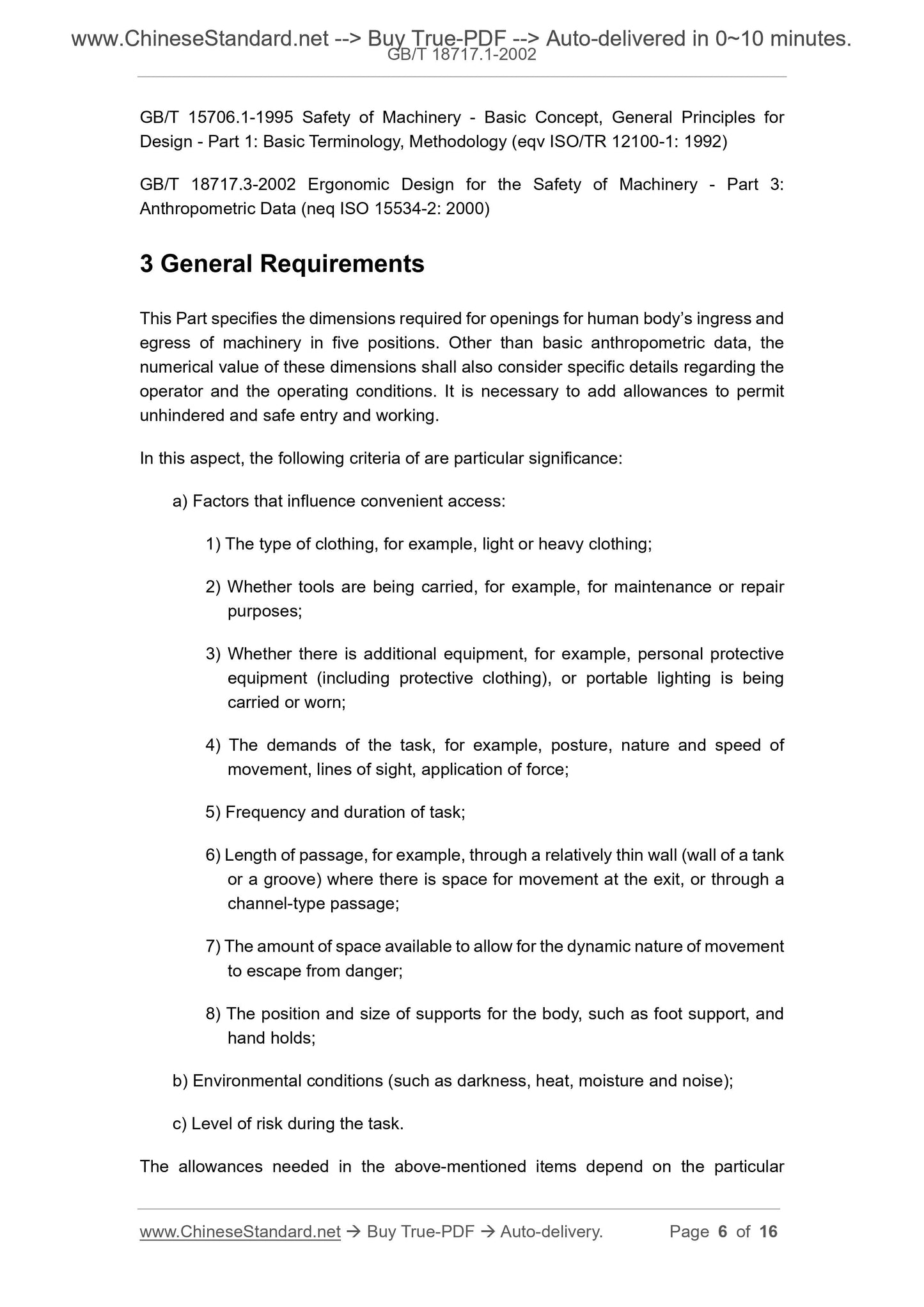1
/
of
5
www.ChineseStandard.us -- Field Test Asia Pte. Ltd.
GB/T 18717.1-2002 English PDF (GB/T18717.1-2002)
GB/T 18717.1-2002 English PDF (GB/T18717.1-2002)
Regular price
$120.00
Regular price
Sale price
$120.00
Unit price
/
per
Shipping calculated at checkout.
Couldn't load pickup availability
GB/T 18717.1-2002: Ergonomic design for the safety of machinery -- Part 1: Principles for determining the dimensions required for openings for whole-body access into machinery
Delivery: 9 seconds. Download (and Email) true-PDF + Invoice.Get Quotation: Click GB/T 18717.1-2002 (Self-service in 1-minute)
Newer / historical versions: GB/T 18717.1-2002
Preview True-PDF
Scope
This Part specifies five dimensions required for openings (minimum openingdimensions, please refer to Bibliography [2]) for whole-body access into machinery
(please refer to 3.1 in GB/T 15706.1-1995), and eleven formulas for the calculation of
opening dimension which combine anthropometric data (human body dimension) and
additional space (allowances).
Please refer to Table 1 in GB/T 18717.3-2002 for anthropometric data. Please refer to
Appendix A in this Part for the numerical value of additional space.
Dimensions for passages are based on the values for either the 95th or the 99th
percentiles of the expected user population (please refer to 3.1 in Bibliography [2]).
Values for the 99th percentile apply to emergency egress routes.
The anthropometric data given in GB/T 18717.3-2002 originates from static
measurements of nude persons, and do not take into account body movements,
clothing, equipment, machinery-operating conditions or environmental conditions.
This Part is applicable to non-mobile machinery. In terms of mobile machinery, there
may be additional specific requirements.
Situations where people are to be prevented from reaching a hazard are elaborated in
GB 12265.1.
Basic Data
| Standard ID | GB/T 18717.1-2002 (GB/T18717.1-2002) |
| Description (Translated English) | Ergonomic design for the safety of machinery. Part 1: Principles for determining the dimensions required for openings for whole-body access into machinery |
| Sector / Industry | National Standard (Recommended) |
| Classification of Chinese Standard | J09 |
| Classification of International Standard | 13.11 |
| Word Count Estimation | 10,136 |
| Date of Issue | 5/17/2002 |
| Date of Implementation | 12/1/2002 |
| Quoted Standard | GB 12265.1; GB/T 15706.1-1995; GB/T 18717.3-2002 |
| Adopted Standard | ISO 15534-1-2000, NEQ |
| Issuing agency(ies) | General Administration of Quality Supervision, Inspection and Quarantine of the People Republic of China |
| Summary | This Standard specifies the body into the machinery (see GB/T 15706. 1-1995 3. 1) Five types of opening size (minimum feature size of the opening, see Ref. [2]), and the anthropometric data (body size) and additional space (margin) 11 combining the calculated size of the opening formula. |
Share
